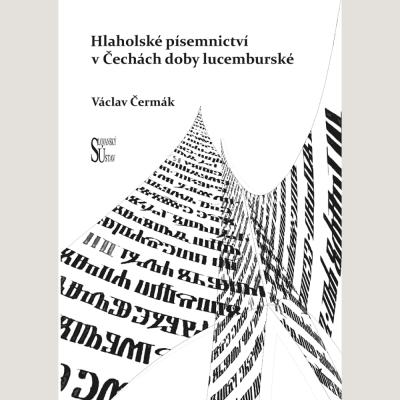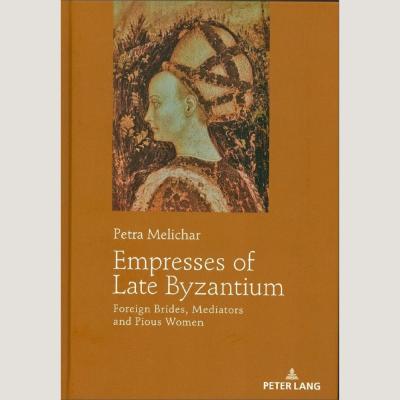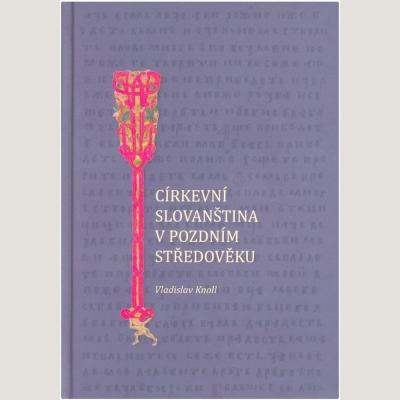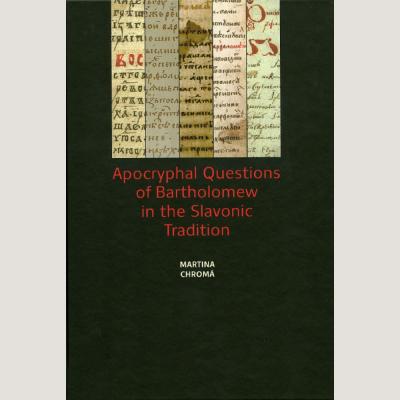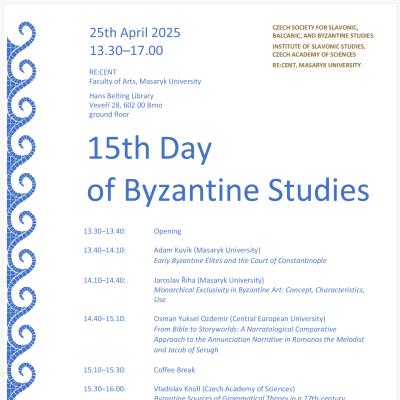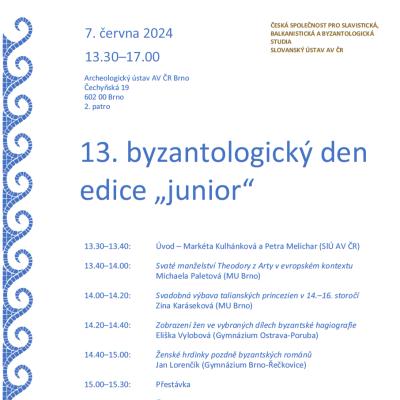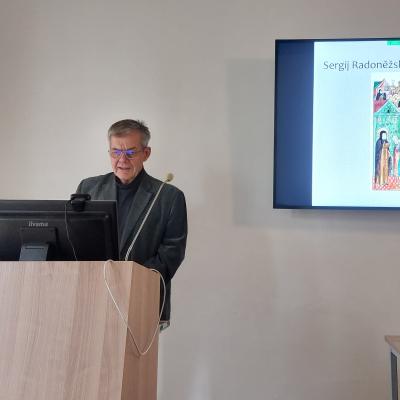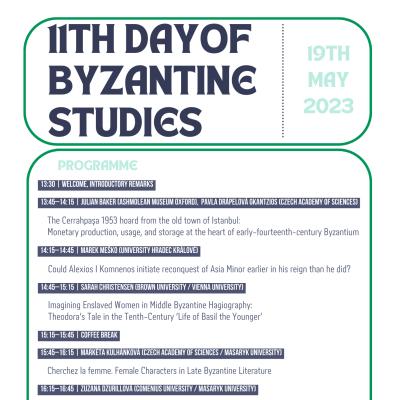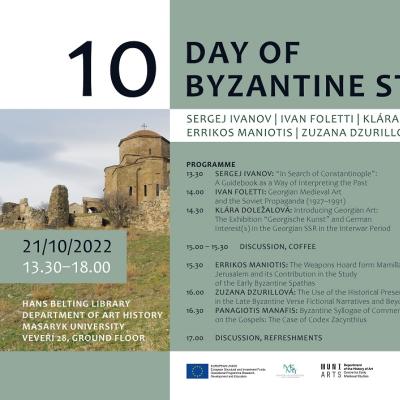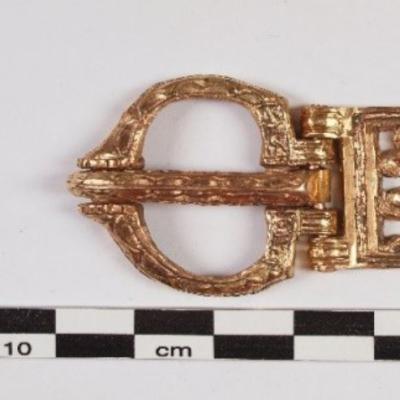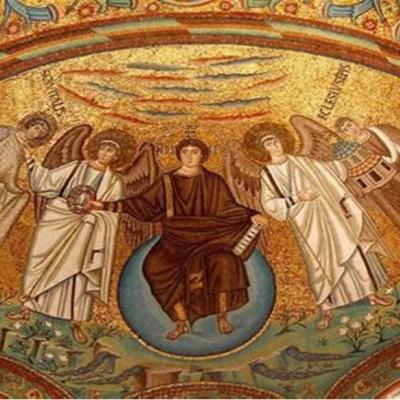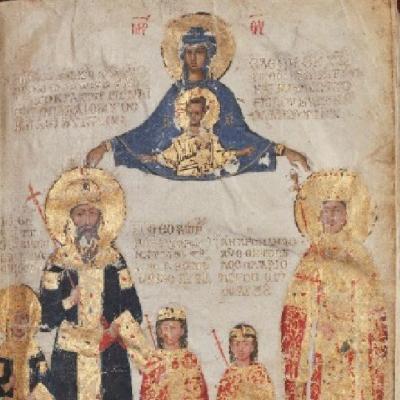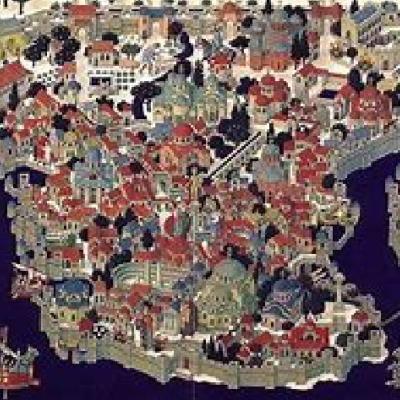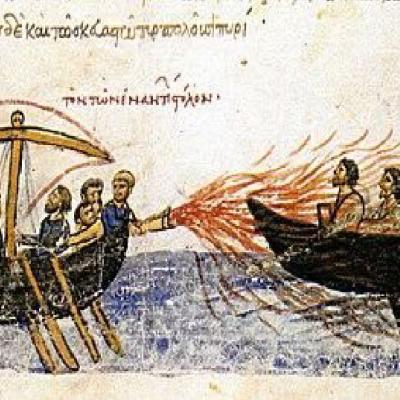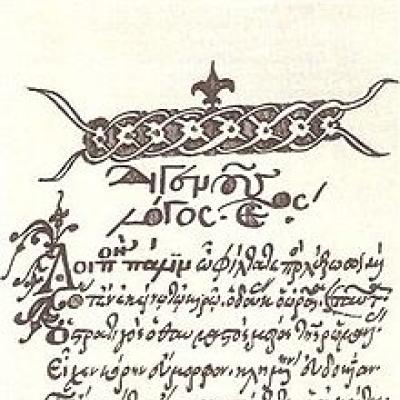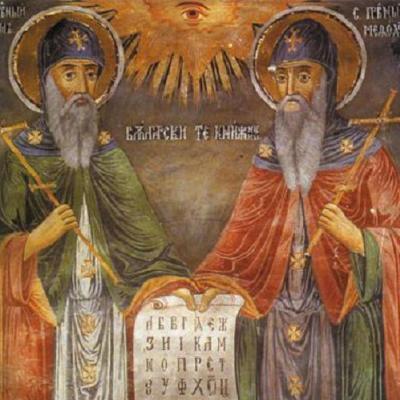Department of Paleoslavic and Byzantine Studies
Head of Department: izr. prof. dr. Petra Stankovska
The Department of Paleoslavic Studies is concerned with the study of Old Church Slavonic and Church Slavonic language and literature, with an emphasis on literary monuments from the region of the present-day Czech Republic (the Great Moravian period, early Premyslid Bohemia, the literary production of the Emmaus Monastery in Prague). The results of this research include comprehensive Old Church Slavonic dictionaries and critical editions of Old Church Slavonic and Church Slavonic texts. The department of Byzantine Studies focuses on research into the world of the Byzantine (Eastern Roman) Empire, especially from the perspective of archaeology, history, and relations between the Slavs and the Byzantines.

Původní cedule na dveřích do místností oddělení
Recordings of lectures given by department staff
Vladislav Knoll: Kolik slovanských jazyků znal středověk?
Jiří Dynda: Poslední slovanská svatyně: Arkona na Rujáně a pád boha Svantovíta
Štefan Pilát: GORAZD: Digitální portál staroslověnštiny
Pavla Gkantzios Drápelová a Jiří Dynda: Slovanské náboženství u byzantského historika Prokopia
Vladislav Knoll: Církevní slovanština aneb jak vzniká klasický jazyk
František Čajka: První staroslověnská legenda o sv. Václavu. Nejstarší česká legenda?
More detailed department activities
The Department of Paleoslavic and Byzantine Studies is concerned with the study of Old Church Slavonic and Church Slavonic language and literature. The present research focuses mainly on monuments from the Great Moravian period and on texts written in Old Church Slavonic language that are of the Bohemian redaction and were composed on the territory of the Bohemian state in the 10th and 11th centuries, alternatively during the reign of Charles IV and in the pre-Hussite period in the Emmaus Monastery in Prague. In addition to its long-term lexicographical tasks, the department is responsible for the publication of critical editions of Old Church Slavonic and Church Slavonic texts, including Grigorovich’s Parimeion or the recently discovered part of the Sinai Psalter, as well as the extensive edition of the Czech Church Slavonic translation of the Forty Homilies on the Gospels of Gregory the Great (Besědy), the Church Slavonic Legend of Saint Anastasia, the Old Church Slavonic Prayer against the Devil, the Apocryphal Questions of Bartholomew and the Czech Glagolitic monuments, such as the Czech Glagolitic Bible, and the Old Czech Glagolitic Comestor. The questions of Slavic liturgy and writing in the Czech territory, ecclesiastical Slavonic in the Balkans and Romania, and the relationship of early Christianity with paganism in the Slavic area are also of interest.
The department has hitherto produced two unique dictionaries: the Dictionary of the Old Church Slavonic Language and the Old Church Slavonic Dictionary based on manuscripts of the 10th and 11th centuries (Старославянский словарь по рукописям X‑XI веков), which will receive a second expanded edition under the title Dictionary of the Oldest Old Church Slavonic Literary Monuments. In the period 2010 – 2016, the Supplements to the Dictionary of the Old Church Slavonic Language were prepared for Volume I, which together form its Volume V, and the Greek-Old Church Slavonic Index, published since 2014, is based on its material. Between 2016 and 2020, these dictionaries and the Old Church Slavonic card catalogue were digitised as part of the GORAZD: Digital Portal of Old Church Slavonic project, and they are accessible on the project website, www.gorazd.org.
All lexicographic projects are based on extensive card catalogues. These include the Old Church Slavonic card catalogue, which contains a complete excerpt of Old Church Slavonic canonical manuscripts, Church Slavonic texts of Great Moravian origin, and Czech Church Slavonic literary monuments; and the Greek-Old Church Slavonic card catalogue, which is made up of texts with a Greek source. The lexical material of these old texts translated into Old Church Slavonic from Latin is included in the Latin-Old Church Slavonic card catalogue; there are also Old High German-Old Church Slavonic cards for several texts translated from Old High German. The method of excerpting is described in detail in the Dictionary of the Old Church Slavonic Language, p. IV, or in the study by F. V. Mareš, Old Church Slavonic Lexicography, published in Cyrilo-Methodian Tradition and Slavonic Studies. The cards of the Old Church Slavonic card catalogue are available at www.gorazd.org/kartoteka (without additional excerpts). The Department also provides access to other card catalogues for domestic and foreign researchers, upon prior agreement and subject to compliance with the specified conditions. Enquiries can be made by telephone, in writing, or by email.
The Section of Byzantine Studies is principally concerned with research into the history of the Byzantine Empire, Great Moravia, and the relations of the Byzantines and the Slavs. Among the completed works to which individual staff members have contributed are the substantial collective work History of Byzantium (Academia, Prague, 1992) or the relevant chapters in History of the South Slavic Countries, History of Greece, or History of Serbia. Notable completed works include the Encyclopaedia of Byzantium (Libri, Prague, 2011) and the monograph Cyril and Methodius between Constantinople and Rome (Vyšehrad, Prague, 2013). Since 2017, the Days of Byzantine Studies have been regularly organised. These events are open to experts dealing with the Byzantine Empire and related disciplines who have the opportunity to present their research to the professional public. A joint project of both sections is research into the history of Czech paleoslavic and Byzantine studies. The aim of this project is to map the development of both disciplines from their origins to the present day in a historical overview.
